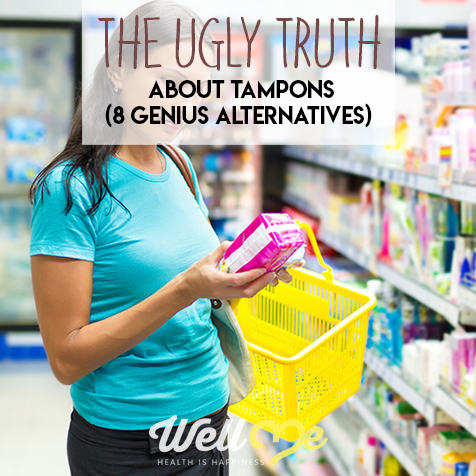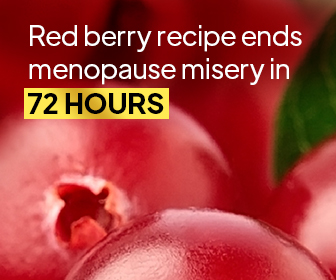Tampons are arguably the most popular menstrual product out there. But popular doesn’t always mean healthy or even good. Despite their availability and common use, tampons have some negative side effects – side effects that you probably never even knew about, or possibly just chose not to think about.
Tampons are easy to use, convenient, and effective. They stop period blood from escaping and keep your underwear (and dignity) safe – what else do you need to worry about? To be able to go about your daily life as a menstruating woman without the constant worry of a leak is all you can ask for – but what if tampons are bad for you? This article is going to take you through very real risk of tampon use and how you might get around this issue.
Are Tampons Safe?
So, like many women, you’re wondering if tampons are safe or not. At the end of the day, it’s up to you whether to start or continue using them. But arming yourself with the facts about their side effects will help you to make an informed choice.
Tampons Cause Odor
This isn’t so much a health risk as an inconvenience, but tampons can cause odor. As they’re not inserted much more than an inch into the body, and they’re holding menstrual blood, extended use can contribute to development of unpleasant smells. Menstrual blood is not the most pleasant substance and can develop a distinctly bitter, metallic odor. Tampons allow this substance to coagulate, similarly to how old sweat smells worse and produces an unpleasant odor. This is a mild concern with other forms of sanitation and flow-control, but tampons tend to have the largest problem with odor. This makes them unpleasant and impractical, requiring many changes a day for most women.
They Might Make Cramps Worse
Some women complain that using tampons seems to make their menstrual cramping worse. There is no hard evidence to say that tampons make cramps worse, but they can sometimes cause swelling which might cause or exaggerate menstrual cramps. Whether there is scientific evidence or not, the fact that women are complaining about this symptom is sufficient reason to be cautious with tampons.
There is a possibility that inserting an object into the vagina whist menstruating can increase the frequency and intensity of uterine contractions and increased cramping. If inserted incorrectly, tampons can cause discomfort and further exaggerate the pain associated with menstruation. Obviously, your period doesn’t need any help being uncomfortable!
Tampons Are Made with Chemicals Linked to Health Risks
Tampons have recently been outed for being made with chemicals that have been linked to many health risks[1]. These chemicals include harsh pesticides and chemicals such as chlorine. Add to this the somewhat lapse monitoring of the FDA which doesn’t regulate tampons as closely as it should do (so not EVERYTHING in them is approved), and the fact that your vaginal walls are naturally very absorbent, and this whole concept is terrifying.
They’re Linked to Cancer
Both tampons and pads are bleached using chlorine. This process results in the formation of dioxins which has been linked to breast cancer, endometriosis, and immune system suppression. The long-term effects of bleached chlorine haven’t been studied closely or extensively enough to be viewed as safe to insert into your vagina! We still don’t 100% know the full health effects of these chemicals, so it may not be wise to put them in your body.
Tampons Can Cause Irritation of the Vagina
Your vagina is a sensitive place and any foreign object can irritate it. This is especially true for scented tampons which can cause swelling, rashes, and general irritation. Low-quality tampons may also be made of a fabric than is unpleasant and a poor-quality tampon can easily result in excessive dryness of the vagina which makes chafing and infection more likely.
Tampons Can Cause Vaginal Infections
Even worse than simple irritation, scented tampons can throw off your vaginas natural pH balance. The pH balance describes the balance of acidity and alkaline in your vagina, and an imbalanced pH can lead to yeast and bacterial infections. You’re not really supposed to put any sort of “scent” down there, we all know to avoid using scented shower gels and moisturizing creams on our intimates (and even to be careful when using scented or flavor lubricants), so it doesn’t make that much sense to ever use scented tampons. Frankly, we’re confused about why they were ever created.
They’re Bad for the Environment
This one isn’t going to have a direct negative impact on your body but, in the long-term, it’s important to consider. Not only is a lot of wastage involved in tampon usage in general with many women using dozens in a regular month, but certain types of tampon have even greater environmental problems. Tampons with plastic applicators, for example, cause even more wastage. With an increased volume of trash going to landfill, increased decomposition time for these plastic components, and the increased negatives of the production process it may make sense to change for environmental reasons.
The average woman produces a total of 62,415 pounds of garbage from menstrual products over her lifetime and will spend over $18,000 buying them. The chlorine bleaching process also has a negative impact on the environment – chemical leaks into the ocean have even occurred in the past, killing wildlife. Overall, tampons seem to be a major financial and environmental burden that you may want to avoid.
The Can Cause TSS
The possibility of Toxic Shock Syndrome (TSS) is ingrained in most young women from the moment they hear about tampons. TSS is an infection that can occur when you wear a tampon for too long[2] (which is why there are warnings all over the packaging for you to never wear one more than 8 hours). Toxic Shock Syndrome can potentially kill or paralyze you.
While TSS is extremely rare, it has received constant attention in many women’s publications and cases of tampon-induced toxic shock often reach national headlines. The tactic of scaring young women into tampon-consciousness is obvious, and this certainly is a serious health issue, but it is a rare occurrence. You should probably be more concerned about the chemicals in tampons or throwing off your pH balance than the rare possibility of TSS.
Tampon Alternative to Consider Using
So now you know the truth about tampons, what can you do to avoid these negatives? What alternatives exist to help you out on a month basis?
For most of us, there’s not much to think about. A no-brainer – when your period arrives, you reach for the box of tampons in the back of the medicine cabinet and continue about your day. But are you aware that there are several other, less conventional options that do the same job? Some of them doing it more safely, with less environmental impact, and a more pleasant effect on your day-to-day life.
1. Pads
The most obvious and well-known alternative to the tampon, though perhaps commonly thought of as inferior. The idea of the pad is a pretty simple one, however the absorbent power of our current pads is such that they can absorb an awful lot more than you think!
For this reason, and their ability to cover much of the underwear they they’re stuck onto, you are likely to avoid any staining of your underwear. This is far more practical, reduces environmental waste, and totally removes the possibility of TSS – especially if you tend to forget about your tampon. This might not hold true if you’re moving around a lot, though; pads do require some adjustment.
Another big plus point of pads is the fact the there is no insertion necessary, no difficult removal, and no other physical problems tampons have the potential to cause do to the fact that they reside inside of you during their use. Pads are also safe for overnight use, as there is no risk of TSS if used for longer than 8 hours, making them a great choice for protection while you sleep.
2. Organic Pads and Tampons
Both traditional pads and tampons, the ones you would commonly find on supermarket and drug store shelves, contain added chemicals. As mentioned previously, both are bleached with chlorines, negatively impacting the environment and your vaginal health.
Numerous organic tampons brands exist on the market, you need only make the effort to look that little bit further. These companies believe that women shouldn’t be exposed to pesticide residues, phthalates, ado-dyes and dioxins, especially in such a sensitive and absorptive part of the body. Organic tampons will normally use 100% organic cotton and nothing else, so you know exactly what you’re putting in your body.
3. Reusable Pads and Tampons
Switching to organic pads and tampons doesn’t take away the issue of the 62,415 pounds of menstrual related garbage produced by your average women in their life time. What if your pads and tampons were reusable? Not only do reusable menstrual products help save the environment, they also help you save money. This option also doesn’t take you too far away from you comfort zone: you don’t have to forego pads or tampons, just switch to the reusable versions.
Brands such as GladRags and Lunapads create washable cloth pads that even feature cute designs. And while they are still a fringe option, there are also reusable tampons for sale, albeit in more niche places such as Etsy. If you’re crafty, you might even consider the possibility of knitting reusable options for yourself!
4. Period Panties
If you’re not a fan of the bulkiness, potential movement, or the frequent trips to the bathroom that come with sticking a pad to your panties, there are many underwear brands that now build pads right into the lining of your panties.
Examples of such companies are Thinx and Knic Wear. Both carry period panties in designs ranging from athletic undies to sexy lingerie. Dear Kate even makes yoga pants you can wear without pads or underwear! These products are all washable and reusable, meaning they will save you dollar, while helping to save the environment.
5. Menstrual Cups
The first menstrual cup was patented in 1937, but the device didn’t become popular until as recently as the past decade. Brands such as Divacup and Lunette have hit stores and helped to pull this menstrual product further into the forefront of public view.
The menstrual cup is simple: a flexible plastic cup is pinched in half and inserted into the vagina, where, when released, it unfolds and creates a tight seal. Menstrual blood collects in the cup, and you empty it out every 10 to 12 hours. This means you are heading to the bathroom while you’re using them, nor do you need to buy new ones more than once a year (providing you take care of your menstrual cup and wash it properly). There is even a ‘smart’ menstrual cup called LOONCUP that will tell you when it needs to be changes, if you prefer to be a bit more tech-savvy with your vagina. This option is a winner for the environment: it’s infrequent replacement really helping to reduce the amount of rubbish produced by your monthly period.
6. Menstrual Sponges
Menstrual sponges are exactly what they sound like. They look like bath sponges and they work pretty much the same way. Made from real sponges (sea sponges harvested from the ocean) they can be washed and reused for up to 6 months. Examples of companies that sell these menstrual sponges are Jade & Pearl and Jam Sponge.
Menstrual sponges will come with instructions containing details of cleaning the sponge for the first time before its use, soaking it and checking it for “hard surfaces” which should be removed before using it for the first time. The sponge will be inserted much like a tampon (maybe with slightly more difficulty due to the lack of applicator and the general increased bulkiness).
The sponge can be trimmed to the ideal size and shape by cutting along its perimeter with scissors. A downside to using a menstrual sponge is plausibly that you might find it a little bit cumbersome and messy to get out. But they certainly are very good for the environment and your wallet.
7. Soft Cups
Very similar in concept to a menstrual cup, a soft cup could be described as diaphragm-like: it involves a piece of cellophane-like plastic stretched across a flexible plastic loop. Like the menstrual cup, you pinch a soft cup in half, slide it in, let it unfold, then push up the front of the plastic loop up so it rests behind your pelvic bone, creating a tight seal.
There tends to be little bit of a learning curve when it comes to using soft cups, so it is often advised that you first start trying them out on lighter days of your period at first.
The soft cup will catch the period blood and hopefully prevent leaks for a longer duration of time than your average tampon. Some care might be required to keep the cup horizontal upon removal to prevent tipping of the collected blood onto the floor (probably best to sit on the toilet for this bit – just to be safe).
Once removed, soft cups can be thrown away like you would do with other disposable sanitary products. Softs cups are potentially less wasteful than pads and tampons, and an easy introduction into getting comfortable with the idea of using something a little bit less familiar.
8. Free Bleeding
What if you were to not use any sanitary products at all during your period? Free bleeding is a fast-increasing trend. For many women who choose to free bleed, the answer for why tends to be three-fold: they don’t like the feeling of wearing pads or tampons, they want to help the environment by avoiding disposable products, and they want to normalize menstruation, forcing society to get comfortable with the fact the women bleed from their vaginas.
Natural bleeding on your period avoids the potential negative health impacts of tampon use, and it can just be more comfortable! Some women even claim to have learned to control their flow, only bleeding when they allow themselves to do so on heading to the bathroom, though evidence for this is yet to be seen.

Menstruation is an uncomfortable time of the month as it is. Adding difficulties with tampons to the list of things you hate about your period seems unnecessary. We’ve provided you with 8 alternatives to tampons, each with different effects on the environmental, health, and comfort.
Spend some time experimenting with what feels more natural for your body, and fits practically into your lifestyle. Some strategies are better than others dependent on the context – if you’re working at the office, free-bleeding may not be a great choice, for example. Take back control of your health by experimenting with these genius alternatives to figure out what works for you!
References
- [1] Scialli, Anthony R. “Tampons, dioxins, and endometriosis.” Reproductive Toxicology 15.3 (2001): 231-238. <http://www.sciencedirect.com/science/article/pii/S0890623801001344>
2 DeVito, Michael J., and Arnold Schecter. “Exposure assessment to dioxins from the use of tampons and diapers.” Environmental health perspectives 110.1 (2002): 23. <https://www.ncbi.nlm.nih.gov/pmc/articles/pmc1240689/> - [2] Schlech, Walter F., et al. “Risk factors for development of toxic shock syndrome: association with a tampon brand.” JAMA 248.7 (1982): 835-839. <http://jama.jamanetwork.com/article.aspx?articleid=376757>








